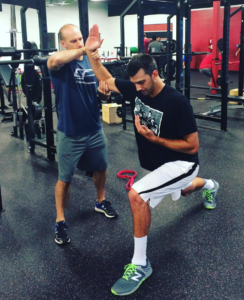
It Needs to Be Said: Throwing Doesn’t Build Arm “Strength”
Today, I’m going to tackle one of my biggest pet peeves in the baseball world: people saying that throwing builds arm “strength.” Sorry, but it doesn’t.
What I’m going to write below might seem like wordplay, but truthfully, it’s a very important differentiation to make. If young athletes believe that throwing builds arm strength, they’ll quickly convince themselves that year-round throwing is safe and acceptable, when it’s actually one of the worst things they can do for long-term health and development. Here’s what you need to know:
1. Throwing builds arm speed – which is power. Power is heavily reliant on muscular strength. If you can’t apply much force, you can’t apply much force quickly.
2. Throwing also builds muscular endurance in the arm. Muscular endurance, too, is heavily reliant on muscular strength. If you don’t have strength you can’t have strength endurance.
If you enhance muscular strength, power and endurance will generally improve. That’s been shown time and time again in the research, both in throwers and other athletic situations. However, if you train power and endurance, strength almost never goes up. Otherwise, we’d see loads of athletes stronger at the end of seasons than they were at the beginning. In reality, if you check rotator cuff strength and scapular stabilizer proficiency at season’s end, it’s generally much lower. As physical therapist Mike Reinold describes it, managing arm strength during the season is a “controlled fall.”
This underscores the importance of using the off-season (including a period with no throwing whatsoever) to improve rotator cuff strength and optimize scapular control. Simultaneously, athletes gain passive stability at the shoulder as the acquired anterior instability (secondary to increased external rotation from throwing) reduces.
Now, we need more research to see if it’s the case, but I think that one of the hidden benefits of throwing weighted baseball is that doing so essentially helps us blur the line between arm strength and speed, as I outlined in this presentation a while back:
Of course, it depends heavily on the volume, frequency, load, and type of weighted ball drills utilized, as well as the time of year at which they’re utilized. However, as I mentioned, it is somewhat of a noteworthy exception to the rule of throwing a 5oz baseball. Weighted balls surely still take a toll on arm strength over the course of time, but that might be a “slower fall.”
Regardless, when you’re talking about a throwing program, feel free to say that you’re building “arm speed” or “arm endurance,” but let’s all appreciate that you definitely aren’t building “arm strength.”



